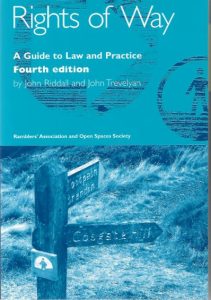The Environment Act 2021 – 10% net gains now mandatory

(This is a preliminary review, awaiting commencement date – either from a Commencement Order, or , if not, the evening of 9 Nov 2021)
The Environment Act 2021 was given Royal Assent on Tuesday 9 November 2021.[1]
NOT to be confused with The Environment Act 1995, especially where sections 4,5,6 on controlling pollution and ‘conserve and enhance’ are concerned.
The Environment Bill had this official long title:
‘A Bill to make provision about targets, plans and policies for improving the natural environment; for statements and reports about environmental protection; for the Office for Environmental Protection; about waste and resource efficiency; about air quality; for the recall of products that fail to meet environmental standards; about water; about nature and biodiversity; for conservation covenants; about the regulation of chemicals; and for connected purposes.’[2]
A new body will be set up called the Office for Environmental Protection (OEP).
Much of the Act is about sewage, but this briefing note is about the natural environment.
The OEP, according to George Eustice (Environment Secretary), will have five roles, which will be legally binding; these will strengthen the government’s commitment to ‘building back greener’ :
- The integration principle
- The prevention principle
- The rectification at source principle
- The polluter pays principle
- The precautionary principle
Further explanations of these are on gov.uk 2021[3]
If you think the last two principles are familiar, that is because they are in the 1992 Rio Declaration, of which the UK was a signatory.
Net Gain – key points[4]
- Developments ‘Must satisfy 10% net gain in biodiversity points’,
- Must be satisfied before planning permission is given
- It is the duty of the LPAs to ensure compliance (expect variable uptake then!)
- ‘The habitats created must be managed for up to 25-30 years’
Exceptions (only two) are
- ‘Householder developments’.
- ‘Specific development on infrastructure land by providers or nationally significant infrastructure.’
Leniency is proposed for smaller sites to prevent disproportionate costs..
Net Gain delivery – more key facts
The government requires all 35,000 developers to deliver these gains.
It estimates they they will have to pay out £900 per ha for site surveys, and £19,698 per ha for habitat creation (advised by RSPB, NT, Wildlife Trusts), inclusive of 30 years maintenance as well.
The government think net gain will help to achieve the 25-year environment plan (Defra, 2018). They also think it will create a ‘level playing field’ for developers.
The gains have been estimated to achieve a monetary value of £1,395.7m. ‘These benefits do not fall within the 10 year appraisal period, as it is expected that developers take 20 years to create the desired habitat condition.’ So delayed monitoring will have be built into each development Site.
It is believed that ‘29% of residential developments already deliver net gain is based on evidence that six developers have some form of habitat mitigation and creation policy.’
The government believe that most net gains will continue to occur on site, though, off-site gains, as offsetting’ is likely to increase. This seems reasonable.
Whilst this consultant already knows some Councils who seek substantial payments of money per ha for biodiversity projects off-site the government have worked out that The assumption of the cost per biodiversity unit at £11,000 is satisfactorily supported’
Other major changes
- The Environment Bill ‘builds on this strong foundation, and maximises the opportunities created by leaving the European Union, underpinning our goal of delivering a Green Brexit.’[5]
If you want to know what a Green Brexit is, go to Soil Association video.[6]
- Statutory Environmental Improvement Plans (the first being the 25 Year Environment Plan) will be created to ensure government can be held to account.
- Local Nature Recovery Strategies will be established across England, to ‘support better spatial planning for nature recovery…’
- Forestry Enforcement Measures will be introduced to give Forestry Commission powers to impose larger fines for illegal tree felling. (currently fines, when imposed are paltry).
[1] Hansard, 9 Nov.2021
[2] Gov.uk 8 Nov 2021. Environment Bill. Commons insistence, disagreement, amendments in lieu and reasons. https://bills.parliament.uk/publications/43515/documents/910 (accessed 12 Nov 2021)
[3] Gov.uk. 2021. Press Release. From Defra and The Rt Hon George Eustice MP, dated 10 March 2021. Consultation launches on on environmental principles. Five legally binding principles will guide future policymaking to protect the environment. https://www.gov.uk/government/news/consultation-launched-on-environmental-principles (accessed 12 Nov 2021).
[4] Regulatory Policy Committee, 2021. Biodiversity net gain Department for Environment, Food and Rural Affairs RPC rating: fit for purpose.
https://assets.publishing.service.gov.uk/government/uploads/system/uploads/attachment_data/file/858037/2019.06.06_-_RPC-4277_2_-DEFRA-EA_biodiversity_net_gain.pdf 6pp. Date of issue 06.06.2019, but current and on site when accessed www.gov.uk/rpc (accessed 12 Nov 2021)
[5] Defra, 2021. Policy paper 30 January 2020, Updated 6 September 2021: Environment Bill 2020 policy statement Department for Environment Food & Rural Affairs (https://www.gov.uk/government/organisations/department-for-environment-food-rural-affairs). (accessed 12 Nov 2021)
[6] Soil Association 2021 Green Brehttps://www.soilassociation.org/causes-campaigns/green-brexit/ (accessed 12 Nov 2021)
